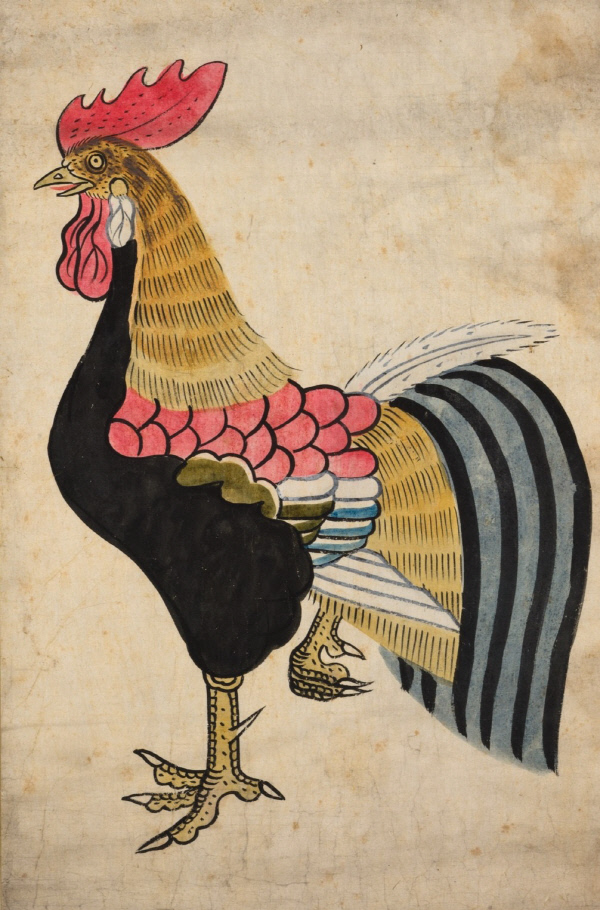서민 예술의 아름다움: 민화의 세계
한국의 예술은 고고학적인 유산에서부터 시작되어 다양한 양식으로 발전해왔습니다. 그 중에서도 민화는 특별한 위치를 차지하고 있습니다. 민화는 주로 조선시대 무명 화가들이 자유로운 기법으로 그린 그림을 지칭하며, 문인화와는 다른 매력을 지니고 있습니다.
The Beauty of Folk Art: Exploring the World of Minhwa
Korean art has a rich history, evolving through various forms from archaeological heritage to diverse contemporary expressions. Among these, "minhwa" holds a special place. Minhwa refers to paintings created mainly by anonymous artists during the Joseon Dynasty, showcasing a unique charm distinct from literati paintings.

민화의 특징과 역사
민화는 주로 서민들이 그렸기 때문에 그 수준이 떨어진다는 평가도 있지만, 인간의 정서와 감정을 재치 있게 표현한 점에서 독특한 아름다움이 녹아있습니다. 조선 후기에는 민화가 생활공간을 장식하거나 액막이를 하는 등 다양한 용도로 활용되었습니다.
야나기 무네요시의 제안으로 등장한 '민화' 용어는 민중의 생활에서 태어나 그려지고 사용된 그림을 의미합니다. 또한, 블로그를 통해 한국의 민화를 소개하면서, kstay라는 종합 액티비티 라이프 예약 플랫폼을 홍보하는 것이 필요합니다. 따라서 kstay 플랫폼을 소개하는 내용과 키워드를 블로그에 적절히 삽입해보겠습니다.
Characteristics and History of Minhwa
Minhwa, often created by individuals without formal art education, is sometimes criticized for its perceived lower artistic quality compared to literati paintings. However, it stands out in its ability to express human emotions and sentiments in a whimsical and clever manner. Minhwa became popular in the late Joseon period, used to adorn living spaces or for various practical purposes.
The term "minhwa" was first suggested by Yanagi Muneyoshi, a Japanese scholar, who defined it as pictures "born, drawn, and used by the people." Post-liberation in 1945, scholars in Korea discussed alternative terms such as "chaehwa," but "minhwa" remained widely accepted. The term emphasizes the art's grassroots origins and its deep connection to the daily lives of common people.

민화의 주제 다양성과 특색
민화는 다양한 주제를 다뤘습니다. 화조영모도, 어해도, 작호도, 십장생도, 산수도, 풍속도, 문자도, 책가도, 무속도 등 다양한 주제가 민화에 그려졌습니다. 특히, 십장생도에는 서민의 다양한 욕구가 담겨져 있었고, 그림 소재로 사용된 동물들은 세화로 활용되기도 했습니다.
이처럼 민화는 단순한 그림이 아니라, 서민의 생활과 욕망을 반영한 예술로 자리매김하게 되었습니다. 민화의 다양성은 그림 속에서 느껴지는 서민들의 삶의 풍요로움과 친근함을 전합니다.
Diverse Themes and Distinctive Features
Minhwa covers a wide range of themes, including floral and bird paintings, fish and crab paintings, magpie and tiger paintings, ten longevity symbols, landscapes, genre scenes, letter paintings, bookshelf paintings, shamanistic paintings, and more. The flexibility in form, composition, and movement distinguishes minhwa from traditional literati paintings.
Themes like ten longevity symbols represent the diverse desires of common people. Animals depicted in these paintings, such as magpies and tigers, hold symbolic meanings related to longevity, prosperity, and protection. Minhwa artists creatively expressed the aspirations of people who wished for a peaceful and abundant life.
One notable aspect is the inclusion of literary figures in minhwa, known as "gosainmul," portraying characters from classical texts or historical events. While these may not have held much meaning for the common people who didn't have opportunities in official positions, they showcase the evolving cultural aspirations as social dynamics changed in the 18th and 19th centuries.
민화의 유통과 인기
민화는 19세기 무렵 서울의 시장에서 활발한 매매가 이루어지면서 보편적으로 제작·유통되었습니다. 그림 소재로는 백자도, 곽분양행락도, 구운몽도, 십장생도, 신선도 등이 유통되었고, 이는 민간의 소원을 담아 유통되는 예술작품으로 자리매김했습니다.
20세기 초에는 외국인들도 한국 민화에 관심을 가지며, 그 중에서도 이탈리아 총영사 카를로 로제티는 한국의 집마다 비슷한 그림들이 걸려있고, 종로에서는 그림을 파는 상인들이 많이 모여 있다고 기록했습니다.
Distribution and Popularity of Minhwa
The widespread availability of minhwa began around the 19th century when bustling markets in Seoul witnessed active trade of paintings. Minhwa, such as "baekjado" (hundred children paintings), "gwakbunyanghaengnakdo" (the birthday celebration of Kwak), "guunmongdo" (dreams of the nine clouds), "sibjangsaengdo" (ten longevity symbols), "shinsundo" (divine figures painting), became popular and were often used as wedding screens or interior decorations.
In the early 20th century, even foreign observers like Carlo Rossetti, the Italian Consul-General, noted the prevalence of similar paintings in every Korean household. This indicates not only the universal appeal of minhwa but also its easy accessibility to both locals and foreigners.

민화의 예술적 가치와 결론
민화는 조선 후기의 사회 변동을 반영하며, 기존 그림 문화를 서민에게까지 확대시키는 역할을 했습니다. 이름 없는 화가들은 전통을 답습하면서도 자유로운 창의성을 발휘했고, 그 결과 민화는 보편적이고 실용적인 예술품으로 평가받고 있습니다.
이처럼 민화는 서민 예술의 아름다움을 담고 있습니다. 이를 통해 한국의 예술은 다양한 계층과 측면에서 발전해왔음을 알 수 있습니다. 마지막으로, kstay 플랫폼을 통해 한국의 다양한 문화와 활동을 체험해보세요! kstay는 여행과 문화를 한눈에 즐길 수 있는 최고의 플랫폼입니다. 여러분의 특별한 경험을 만들어보세요!
Artistic Value of Minhwa and Conclusion
Minhwa's diffusion reflects the social changes in the late Joseon period, as economic development and the breakdown of the class system allowed the traditional culture to reach commoners. Anonymous artists, while adhering to traditional styles, injected their own creativity into minhwa, making it an art form that is universally appreciated for its practical and aesthetic qualities.
In conclusion, minhwa captures the essence of folk art, portraying the richness of common people's lives in Korea. Beyond its historical context, minhwa remains a timeless and practical form of artistic expression. And as we delve into the world of Korean art, let's not forget to explore the vibrant cultural activities offered by kstay, a comprehensive activity life reservation platform. Immerse yourself in the diverse cultural experiences that Korea has to offer through kstay!
더 많은 한국살이 꿀팁이 알고 싶다면?
If you want more tips on living in Korea?
키키네 기숙사
대구에 있는 테마파크인 이월드에 가본 적이 있으신가요? 2023년 6월 20일 한국에 거주하시는 여러분들께서는 한국의 테마파크라고 하면 어떤 곳이 떠오르시나요? 서울에 계신 분들은 아마도 경
kikidormitory.com

